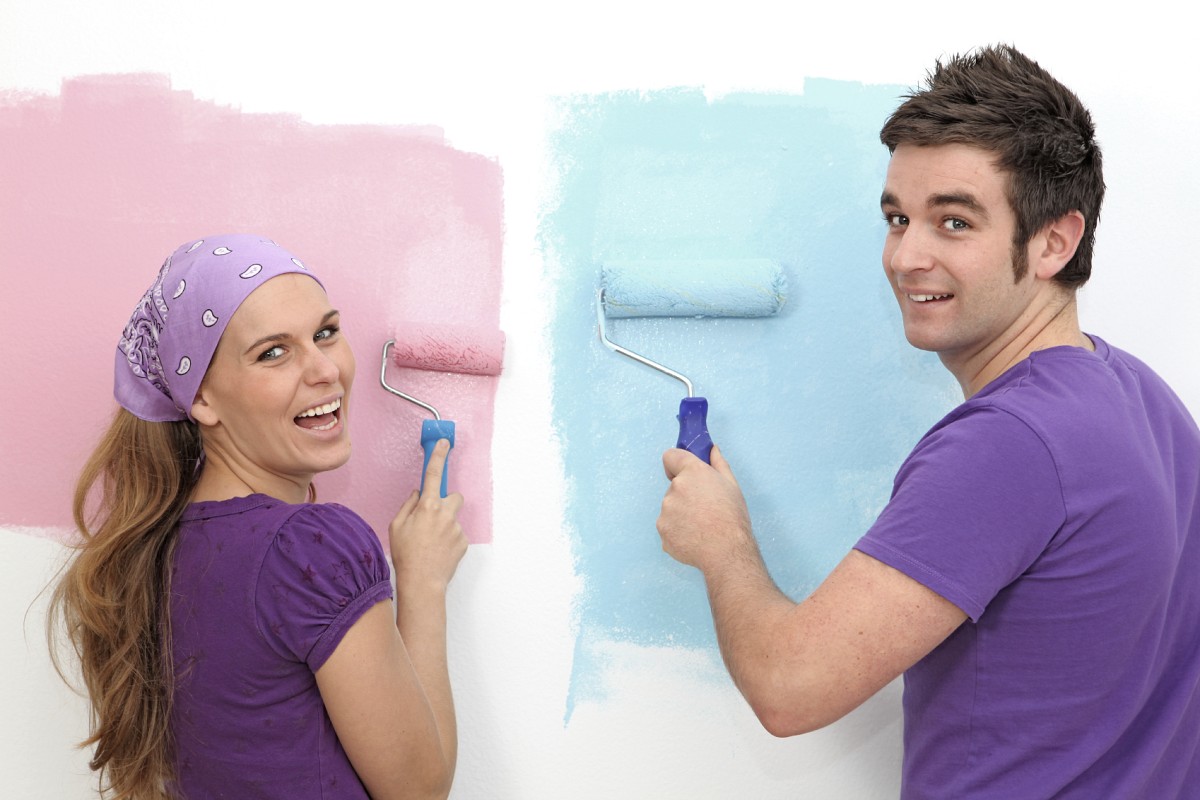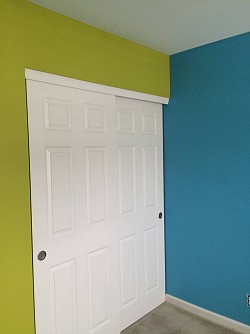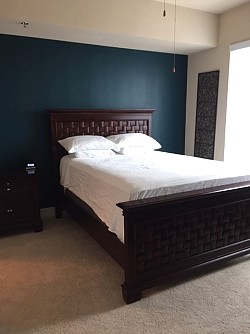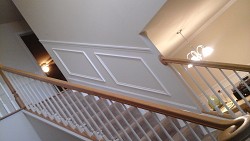Eggshell Paint

If you've ever assumed that "eggshell" referred to a paint with an off-white color, you'll be glad to know that lots of people make that mistake. Eggshell paint, in fact, refers to the paint's sheen or shininess-just like "semi-gloss" and "flat" - and it's available in any color you want.
To determine whether eggshell paint is the right sheen for your next painting project, it helps to understand the different levels of sheen and how this affects the painted finish.
Low-Sheen Paints
At the low end of the gloss spectrum are flat and matte paints. Higher mineral content means they reflect less light, which also means they hide dips, bumps and other surface imperfections better than glossier paints. Scrubbing a flat-painted wall with a damp sponge leaves paint residue on the sponge-that means low washability. Therefore, low-sheen paints are best for ceilings, where you don't want a lot of glare and where stains and fingerprints aren't a common problem.
High-Sheen Paints
Semi-gloss and gloss paints are the shiniest, hardest and most washable formulas. Semi-gloss is a standard choice for trimwork, such as baseboards and door and window casing. It also makes for highly washable walls in bathrooms and kitchens, but it can be a little too shiny over large areas. Gloss paint is akin to a lacquer finish; nice for fine paneled doors and furniture, but often too shiny for intricate trimwork and certainly too much for walls.
Eggshell and Other Mid-sheen Paints
Eggshell paint is more or less right in the middle of the sheen spectrum. It's washable enough for most well-used rooms yet has a relatively matte finish for a warm feel overall and a pleasing depth of color. This versatility makes eggshell paint the most widely used paint formula. It's usually the best choice for walls in all living spaces and hallways and for bathrooms and kitchens that don't need the extra plasticity of a semi-gloss finish.
It's important to note that paint sheens and manufacturers' names for them are not standardized. Some companies call their mid-sheen paints "satin" or even "velvet." Some offer both eggshell and satin formulas, but you'll have to ask which one is shinier, since it could go either way. Why such inconsistency in paint nomenclature? Probably for the same reason some businesses use "pre-owned" for used goods or "grande" for large-size: They're simply trying to make an ordinary thing sound better.
Choosing an Eggshell Paint
As with most paints these days, eggshell paints are available in a range of quality levels, with different additives and performance factors and, more recently, greater environmental friendliness (through low- or no-VOC formulas). Choose the specific blend based on your preferences and application. For any quality job, it's always worth it to spend a little more for premium paint. It lasts longer, looks better and covers more completely than cheap paint. And because eggshell paint is in the middle sheen range, choose a latex (water-base) product instead of alkyd (oil-base). The benefits of oil paint (namely, a smoother surface) apply more to high-gloss finishes than to general wall applications.
Need help picking paint? When choosing between gloss, semi-gloss and other options, you first need to choose the paint base: oil or latex.
Looking for a Pro? Call us (866) 441-6648

Painting Average Costs
Painters Experiences

Nursery Painted Just In Time To Welcome Our New Baby Boy

Painting An Accent Wall In My Formerly Vanilla Apartment



